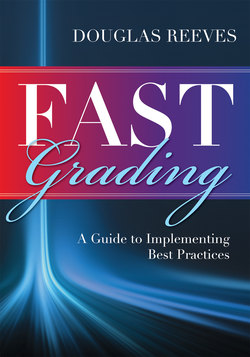Описание книги
Embrace effective grading procedures that have the power to reduce failure rates, improve student discipline, encourage learning, and enhance morale. In this three-part guide, the author presents practical strategies teachers and administrators can use to ensure their grading practices center on four essential criteria: fairness, accuracy, specificity, and timeliness. Apply case studies, real-world feedback models, and interactive reflection questions gain support for grading reform, navigate implementation challenges, and more. Benefits Discover effective guides to resolving student behavior problems, tardiness, and academic dishonesty. Learn about the five mistakes educators often make that cause grading reform to fail. Understand how to gain the support of stakeholders for grading reform, even when opinions differ. Study how bad grading practices waste teachers’ time and how improved practices can save time. Consider the experiences of schools that have tackled grading challenges. Reflect on grading practices and plan improvements using exercises in every chapter. Contents Introduction FAST Grading: Fair, Accurate, Specific, and Timely Part I Building Relationships with Teachers, Parents, and Communities 1 Preparing for FAST Grading 2 Finding Common Ground in the Grading Debate 3 Gaining Teachers’ Perspectives on Grading Part II Implementing FAST Grading and Improving Best Practices 4 Establishing FAST Grading 5 Implementing Time-Saving Strategies for Busy Teachers 6 Grading Student Behavior Part III Considering FAST Feedback Throughout Schools, Systems, and Communities 7 Learning from Physical Education and the Arts 8 Considering the Contexts of Teaching and Leading
